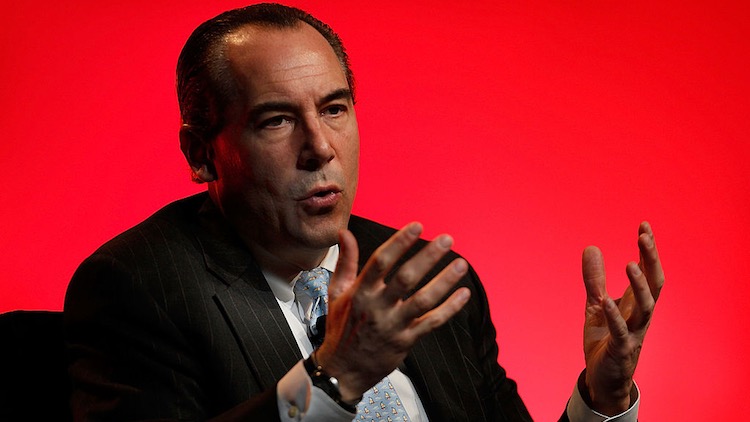VIDWeek: No One Immune to the OTT Effect, Rogers Says

Complete Coverage of VIDWeek
New York – Programmers and distributors of all sizes are not immune to the slow but deliberate disruption being levied by over-the-top video services, according to Tom Rogers, the former NBC and TiVo exec who is now a key player at a startup called WinView.
“I’m not surprised, and I don’t think it’s been quick,” he said of the growth of OTT video services, noting that TiVo and Netflix first agreed to an integration deal back in 2008. “We said this is the model, this is what’s going to happen [and] the cable industry had better embrace it.”
Rogers, in a keynote discussion here at the Next TV Summit with Mark Robichaux, editorial director at Multichannel News and B&C, said the disruption from OTT to the pay-TV industry doesn’t look severe yet because the sources of advertising on the digital video side have yet to develop significantly because most of the disruption is coming from subscription-based services like Netflix and Amazon.
Rogers said the impact of OTT will take longer to affect larger media companies but will impact them just the same.
“The fact that you’re a Fox, in and of itself, does not inoculate you from those trends,” he said, noting that OTT has already had a clear impact on Disney and ESPN.
“This disruption, I think, is going to catapult,” Rogers said, noting that a big driver will be the emergence of new skinny bundles that don’t include sports programming.
Broadcasting & Cable Newsletter
The smarter way to stay on top of broadcasting and cable industry. Sign up below
Most skinny TV bundles in the U.S. include sports programming and sell in the range of $30 to $40 per month, plus the cost of broadband, Rogers observed, noting that in other parts of the world, non-sports bundles have emerged that cost $8 to $10 per month.
“You are going to see, and I don't know if it's going to be a year or two years or what the timeframe is, a $10 non-sports skinny bundle develop and the acceleration of the breakup of the traditional channel world that it's going to create."
Several programmers appear to be on board with that idea. Of recent note, Viacom CEO Bob Bakish told an investor's conference that the industry must develop a non-sports entertainment bundle at a lower price that will appeal to price-conscious consumers.
“Sports is key to this because it’s so much a function of the pricing on the current bundle and has so much to do with the disruption that’s to follow,” Rogers said.
Sports programming, meanwhile, is also critical to Rogers’s latest venture, WinView, a startup that has developed a free mobile app that lets users win cash prizes by making situational predictions during live TV sporting events, including the recent addition of Major League Baseball.
Rogers, who serves as executive chairman at WinView, said the service goes to the heart of the issue affecting linear television by providing an engaging social experience for viewers and offering an outlet that can attract millennial audiences.
With WinView, Rogers aims to replicate in the U.S. the success similar services have had in Europe, estimating that it’s a $160 billion industry on the other side of the pond.
And don’t expect WinView to try to integrate the service on set-top boxes for a while. For now, the low-hanging fruit is with mobile and perhaps tie-ins with smart TVs, Rogers said.
WinView has a portfolio of 40 “foundational patents” covering the synchronization of the second-screen with TV broadcasts and commercials.
“One lesson I learned from TiVo is, intellectual property is critical,” Rogers said. “You’ve got to be able to protect your turf.”
